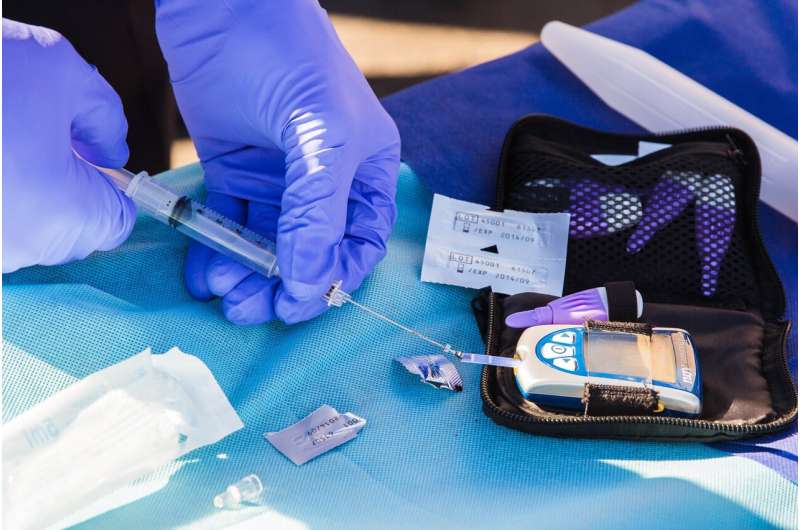
A novel therapy developed at the University of Alabama at Birmingham ameliorates obesity and Type 2 diabetes in mice fed a high-fat diet. The therapy acts through sustained release of nitric oxide, a gaseous signaling chemical whose most important function in the body is relaxing the inner muscles of blood vessels.
“Because reduced bioavailability of nitric oxide is the hallmark of cardiometabolic syndrome, supplying exogenous nitric oxide at a sustained level may be an efficient way of treating the cardiometabolic syndrome,” said Jeonga Kim, Ph.D., leader of the UAB study. “The strategy of reducing body weight by the local delivery of nitric oxide may be a novel, efficient and safe way to prevent and treat multiple metabolic diseases.”
This study, published in the journal ACS Applied Materials & Interfaces, used an ingenious self-assembling, nanomatrix gel capable of releasing a burst of nitric oxide in the first 24 hours, followed by sustained nitric oxide release for four weeks. The gel was developed by UAB researchers Ho-Wook Jun, Ph.D., and Brigitta Brott, M.D., and it is licensed through the UAB Harbert Institute for Innovation and Entrepreneurship by their UAB spinoff company, Endomimetics LLC.
The gel was injected subcutaneously into 8-week-old mice every two weeks for 12 weeks. Gel-injected mice and control mice were fed a high-fat diet, known to induce obesity and insulin resistance.
At the end of 12 weeks, the nitric oxide-mice had gained 17 percent less body weight, compared to controls, and that weight difference was due mainly to decreased fat, not lean mass or water content. The researchers saw increased phosphorylation of the enzyme hormone-sensitive lipase and a reduction in the size of fat cells in epididymal white adipose tissue, or eWAT. Increased lipolysis may explain the reduced body weight, Kim says.
The nitric oxide-mice also showed improved glucose tolerance, and decreases in fasting serum insulin and leptin levels.
Kim and colleagues found wide-ranging changes in measures of inflammation and metabolism in the nitric-oxide mice, compared to controls. The expression of four inflammatory genes, including a marker for macrophages, was reduced in eWAT.
The nitric oxide gel also appeared to stimulate the browning of adipose tissue, through increased gene expression of uncoupled protein 1 in brown adipose tissue and beige adipose tissue. Nitric oxide is known to increase mitochondrial biogenesis, a mechanism for the conversion of white adipocytes to beige adipocytes. Brown adipose tissue, or brown fat, produces heat to maintain body temperature in cold conditions. The fat cells in brown adipose tissue and in inguinal adipose tissue from the nitric oxide-mice were also smaller than cells from controls.
The nitric oxide gel also protected against non-alcoholic fatty liver disease, as seen by lower liver weight, reduced triglycerides in the liver, and reduced triglycerides and cholesterol in blood serum. The nitric oxide gel also improved insulin sensitivity, as measured by increased expression of five insulin-signaling molecules in skeletal muscle, liver or eWAT.
The mice that received the nitric oxide gel also had improved cerebral blood flow, and they showed significantly improved spatial learning ability, as measured by the Morris water maze test. It is unknown whether those changes were a direct effect of nitric oxide or were mediated through the neuroprotective effects of adipocyte beiging.
Source: Read Full Article